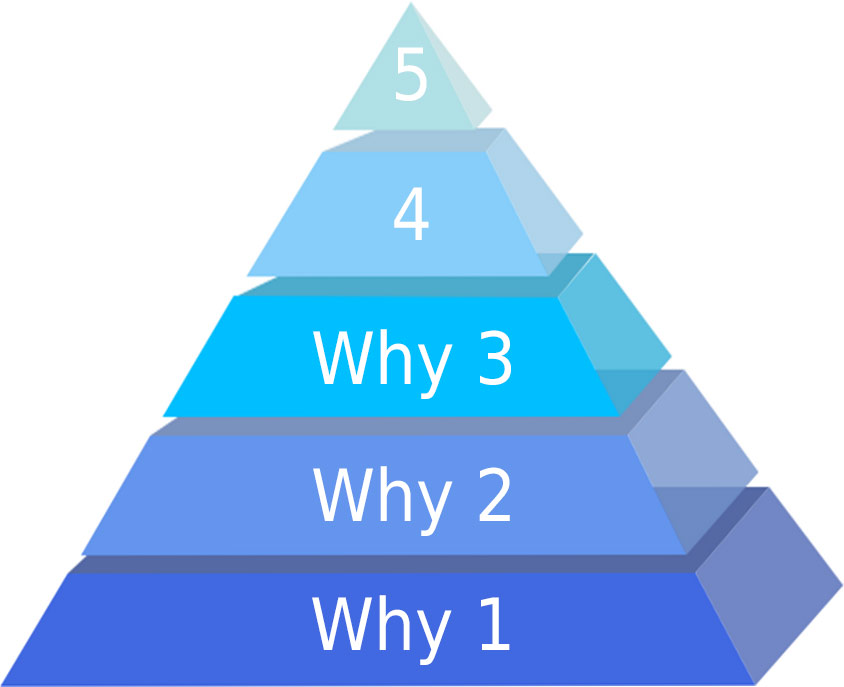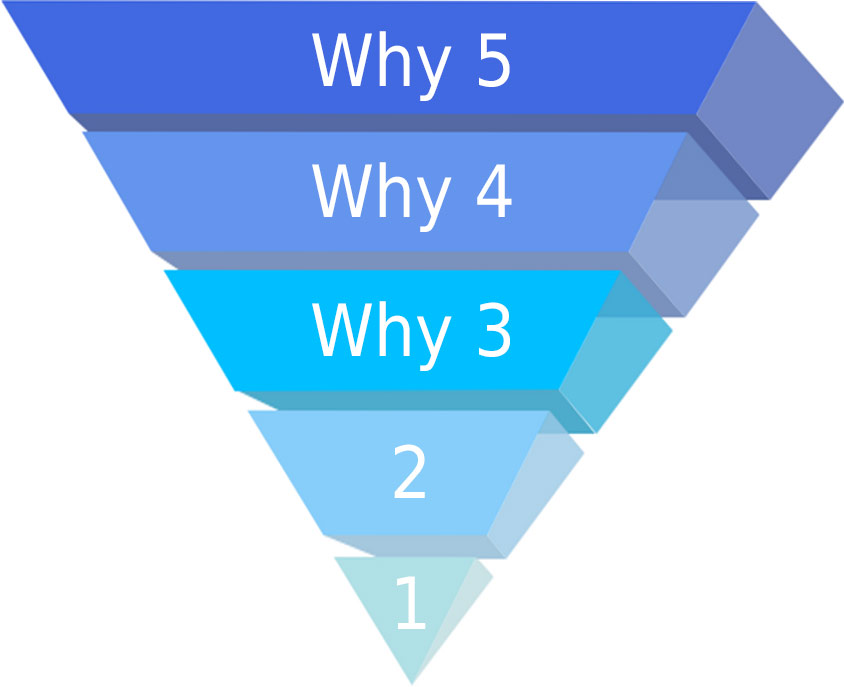This is an open letter to MacKenzie Scott and anyone else donating money to charities.
Dear MacKenzie Scott,
I am impressed with you signing the Giving Pledge and the sheer amount of money you’ve been giving. The world collectively thanks you.
However, when looking at how you’ve been selecting and aiming your donations I feel there’s some aspects missing to the approach and I think a 5 Why’s analysis would work well.
The 5 Why’s is an approach to working out the root cause of a defect or problem by repeating the question “Why?”. Each answer forms the basis of the next question.
You repeat the process until you come to the root cause (which can often be 5 times). You then apply corrections and fixes at each of the levels.
It’s that last point which I’ve found many charities, groups and organisations are unable to do as they exist only work on a certain level.
An example 5 Why’s:
The vehicle will not start.
- Why? – The battery is empty.
- Why? – The alternator is not functioning as the alternator belt has broken.
- Why? – The alternator belt was well beyond its useful life, but not replaced.
- Why? – The vehicle has not been maintained.
- Why? – The vehicle is so old that maintenance costs are too high.
There’s a few different funding strategies you can apply. Broadly speaking I describe them as the pyramid, upside down pyramid, cylinder and spotlight.

The pyramid focuses most of the money and resources on the first Why and applies less money as you go up the pyramid. In the vehicle example you’d spend the most money on buying a new battery, some on an alternator belt and a little bit towards a service, but barely even browse your phone whilst on the toilet looking at new cars.

The Inverted Pyramid is the opposite of the Pyramid funding scheme. In this case you might first get your car battery recharged and put on an alternator belt, but you’d spend most of your time and money on buying a new electric car. That way you don’t have to worry about all the other issues which will soon get worse and stop it from working in other ways.
The Cylinder / Tube funding scheme is straight forward. You just spend about the same amount of time and money on all the sections. So you might have the technician get the alternator belt changed straight away and the car jump started. You might also buy a car diagnostic system so you can investigate what other issues might arise and fend them off before they cause the car to break down on the freeway, blocking up traffic. You’d then buy an eBike as a backup for those days when your car is in the shop for repairs, which will be often enough you’ll also need a great raincoat for when riding the bike in the rain, plus get a lock for it and it’ll need it’s own servicing occasionally.
The Spotlight funding scheme usually focuses on a single metric, e.g lives saved per dollar spent, which initially seems very admirable. An example was chemically treated mosquito nets in Africa, building water treatment facilities or sending condoms to reduce AIDS. Unfortunately this means there’s often a myopic focus on a symptom but without enough investigation into the other why factors. e.g You hear that the battery is dead and you get the battery replaced. You’ll soon find the new battery dead again and instead of recharging it or repairing the alternator belt you complain about being sold a faulty battery.
As per your post about 384 ways to help:
Some are filling basic needs: food banks, emergency relief funds, and support services for those most vulnerable. Others are addressing long-term systemic inequities that have been deepened by the crisis: debt relief, employment training, credit and financial services for under-resourced communities, education for historically marginalized and underserved people, civil rights advocacy groups, and legal defense funds that take on institutional discrimination.
384 ways to help
I can see you and the team are addressing some of the systemic issues.
However none attempt a system level redesign.
Thankfully with all the due diligence and work you’ve done in investigating the charities it seems that you aren’t using the spotlight funding scheme. You use the word “systems” 5 times between the two posts and the charities selected seem to have a mix of what I would consider the first 2 or 3 why’s with a Pyramid funding scheme. Most of the focus is on the short term problems with some addressing in-system change. But I couldn’t see any that are addressing the root cause of most of these issues.
Obviously not all problems have a single root cause. However many of the causes you were targeting, including Racial, LGBTQ+ and Gender Equity as well as Functional Democracy, Public Health, Climate Change and more are a result of failures of our current socio-economic system. In the car analogy, the focus has been on repairing the car instead of getting a new one and working out how to use it.
Your current focus is especially on those affected by Covid19 so a 5 whys analysis would look something like this:
Q1. Why are so many more people starving, homeless or simply struggling to meet basic needs?
A1. Because they need a job to survive but they’ve been laid off in staggering numbers.
Actions:
- Directly give people money
- Give people food and water
- Give people shelter
- Get people jobs
- Transition to a UBI or UBS (although be careful)
Q2. Why have people been laid off?
A2. Due to the lockdowns and economic downturn because of the Covid19 pandemic.
Actions:
- Stop or reduce the effects of the pandemic as much as possible
- Help invest in vaccines (Bill and Melinda Gates foundation did this well)
- Help reduce vaccine red-tape (this has been done)
- Help reduce the misinformation around vaccines so enough people get vaccinated we’ll have herd immunity (there’s a whole other issue about algorithms prioritising screen time causing issues with our collective sense making here)
Q2. Why can’t the government or the markets save us from this situation?
A2. Because there’s political and economic issues to simply printing more money.
Actually the governments of the world have been printing lots of money but there’s core system issues, from increased inflation that will cause the poor to have even less money, to technological unemployment. All while because of the profit motive mixed with our values system we are creating more and more externalities causing grave environmental damage and human suffering.
Q5. Why aren’t we changing to a different system?
A5. We should be working towards transitioning to an abundance centered society (also known as post-scarcity), but there’s not nearly enough resources devoted to it.
There’s a number of groups working towards a post-scarcity society. They include The Zeitgeist Movement, The Venus Project, Game B, Social Ecology / Communalism and more.
I define a post-scarcity / abundance centered society as one where at least the necessities of life are free, for everyone on the planet.
There’s many aspects to a potential abundance centered society. Most require a full systems redesign using Cradle to Cradle materials flow so things are designed to last, or to be bio-nutritional (good for the environment). They’ll use access abundance, aim to have better collective sense and decision making. Obviously everything from automated production to the scientific method are all important.
For a better overview of both the issues of our current system and an overview of a new one I highly recommend Zeitgeist Moving Forward.
I’ve also got a presentation about transitioning to a post-scarcity society.
Cheers!
Michael Kubler
